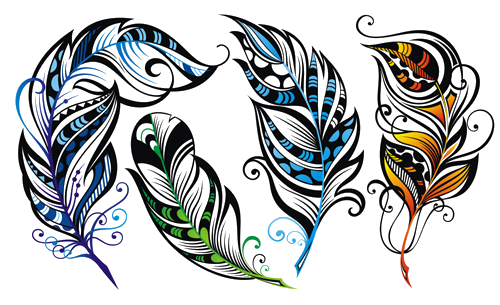Barred Parakeet - Bolborhynchus Lineola - Least Concern
The barred parakeet (Bolborhynchus lineola), also known as lineolated parakeet, Catherine parakeet or 'linnies' for short, is a small parrot found distinctly in highland forests from southern Mexico to Panama, in the Andes from western Venezuela to southern Peru and Bolivia, the Santa Marta Mountains in Colombia and the Venezuelan Coastal Range. Its plumage is mostly green with multiple black and dark green stripes or bars, and it has a pale-horn colored beak. The dark stripes vary in prominence between its two subspecies. Several color mutants are available in aviculture.
Taxonomy
There are two subspecies of the barred parakeet
Bolborhynchus lineola lineola
Bolborhynchus lineola tigrinus
Description
The barred parakeet is about 16 cm (6.5 in) in length and has a weight of about 42 to 52 grams. It is mostly green and has black stripes (or bars) over its upper-parts, except on the top of the head. Its lower-parts are olive-green with very dark green stripes on its sides. The shoulder of its wings is black, there is some blue on the under-side of its wings, and its tail is dark green. The irises are dark brown and its beak is horn colored. Its legs are pink.[3] Juveniles have less-marked dark stripes, which darken with age. Males and females are generally similar in external appearance, but males may sometimes have more marked black stripes than the female. Usually, however, there is no discerning trait to differentiate sex and sexing must be done surgically or through blood tests. The two subspecies differ in the prominence of the dark stripes.
Habitat and Status
Their habitat is the forests and mountains up to an elevation of roughly 3,300 m (2.1 mi) above sea level. They spend some of their time on the ground, but sleep high in the trees.
The barred parakeet has a large population that is thought to be stable.
Behavior and breeding
There are usually two to four eggs in a clutch, which hatch after about 18–21 days of incubation. Chicks leave the nest at about five weeks after hatching.
Lineolated parakeets are found in the wild in groups of six to thirty, although bigger groups (up to 150 birds) are known. They eat fruit, dried and germinated seeds, and insect larvae.
Lineolated parakeets are known for their calm dispositions and peculiar postures. Unlike many birds, lineolateds typically rest in a near horizontal position with their heads almost in line with their tails. They are generally very calm birds and typically mumble quietly, and their calls are not high-pitched or piercing to the ear.
Aviculture
Barred parakeets are popular as pets because of their quiet and even-tempered disposition, and also because many color mutations are available. Green series birds include the normal green (wild type), dark green, olive, and the green series ino called lutino (yellow). Turquoise series birds include turquoise, cobalt, mauve, and the turquoise ino called creamino (white). Greywing, where the barring and overall color is diluted, is another mutation that can fall on any color mutation, even the inos. Violet, misty, and cinnamon types are seen in European aviculture, but rare in the United States. Their average lifespan is about 10 years, but individual birds have been known to live up to 15 years.[citation needed] They are talented mimics of human speech.
One of the most recognizable and entertaining characteristics of barred parakeets is that they enjoy bathing and being misted with water. Barred parakeets notably enjoy these mist baths; they will hang upside down and open their wings eagerly. Pet linnies are also known to have a unique trait of liking to burrow or hide in or under clothing for hours on end, and will sometimes fall asleep in their found hiding places.
Food for pets
Pellets are an ideal base for not only lineolated parakeets, but for many other pet birds as well, as they contain many of the essential vitamins and nutrients the birds need. Seeds should be fed as a branch of the diet but not as a staple, as a seed-based diet can cause obesity, malnutrition, and kidney failure. Green-leaved vegetables such as kale, collard greens, and turnip greens, as well as broccoli, carrot, and cauliflower, are readily consumed. Common fruits that are offered include banana, papaya, apple, apricot, and orange. Eggs, whether scrambled or boiled (along with the shell), are an excellent source of protein and calcium. Hemp, roasted soybeans, potatoes, green peas, strawberries, coconut, pumpkin seed, alfalfa, and sunflower seeds are other foods that are consumable. It is good to offer different foods to keep the diet balanced, and it keeps them from getting bored.

Psittaciformes, The Parrot Index, a part of Phoenix Feathers © 2016 - 2023
Page last updated: 12/24/23
Phoenix Feathers

